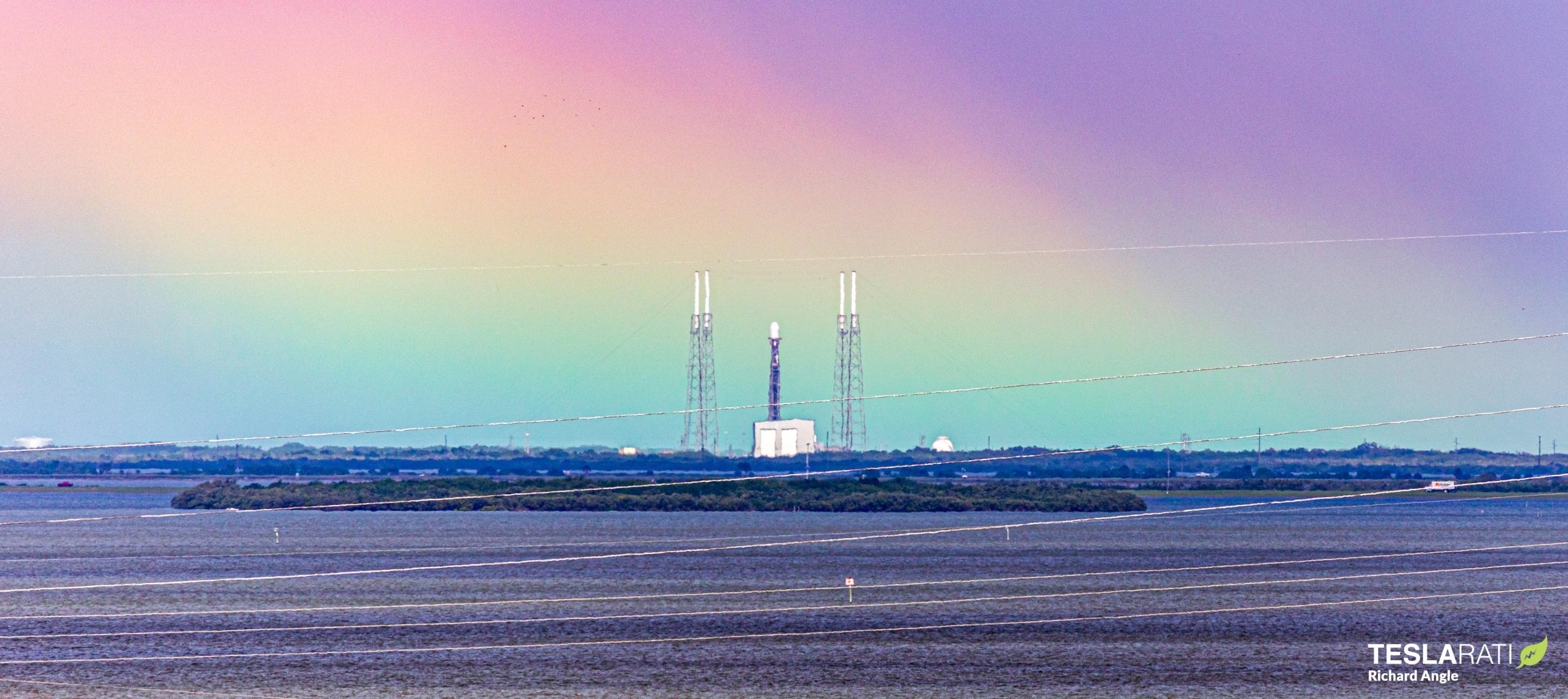
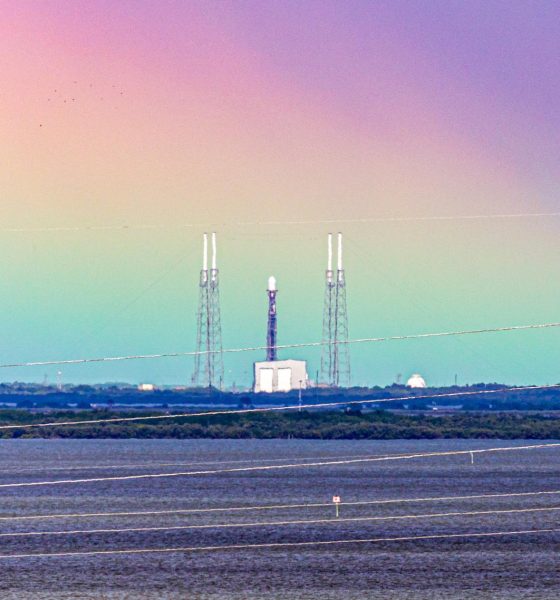
News
SpaceX scrubs Falcon 9’s seventh-flight debut for more “mission assurance”
Update: SpaceX has scrubbed Falcon 9’s seventh-flight debut and the 14th Starlink launch this year to allow more time for “data reviews” and “additional mission assurance” and is now scheduled to launch Starlink-15 no earlier than (NET) 9:34 pm EST (02:34 UTC) Monday, November 23rd.
In a tweet shortly after the decision was made, SpaceX said that both the Falcon 9 rocket and Starlink payload were still healthy, adding a bit of mystery to the decision. On SpaceX’s official mission control audio stream, the Starlink-15 launch director (LD) – most likely Ricky Lim – announced the scrub around T-35 minutes, effectively the deadline for the start of Falcon 9 propellant loading. For whatever reason, SpaceX was not confident enough to commit to launch and LD stated that the scrub had been called to allow for “additional mission assurance” – the second time in recent memory that the company has used that particular industry euphemism.
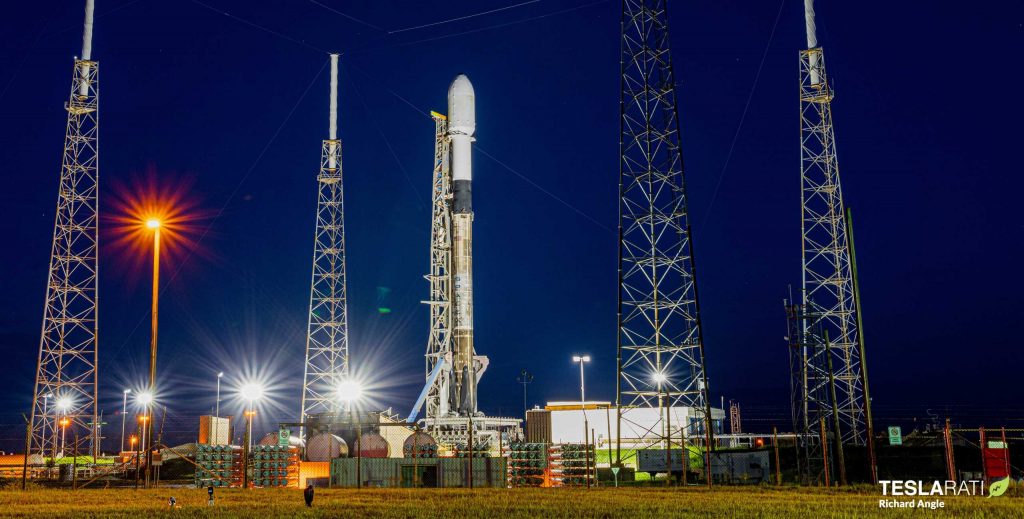
Regardless of the reason, the first seventh flight (sixth reuse) of a Falcon 9 booster is certainly cause enough for caution, as it means that SpaceX is very literally pushing the envelope of orbital-class rocket reusability. Thus far, the company’s record of success during similar first-flight reuse milestones remains flawless – the preservation of which will likely go far to salve the anxieties of more conservative customers like NASA and the US military.
SpaceX says that Starlink-15’s November 23rd backup date may not hold per the threat of bad weather at Falcon 9 B1049’s Atlantic Ocean landing zone several hundred miles downrange. Stay tuned for updates as the company tracks towards what could be its first four-launch month ever.
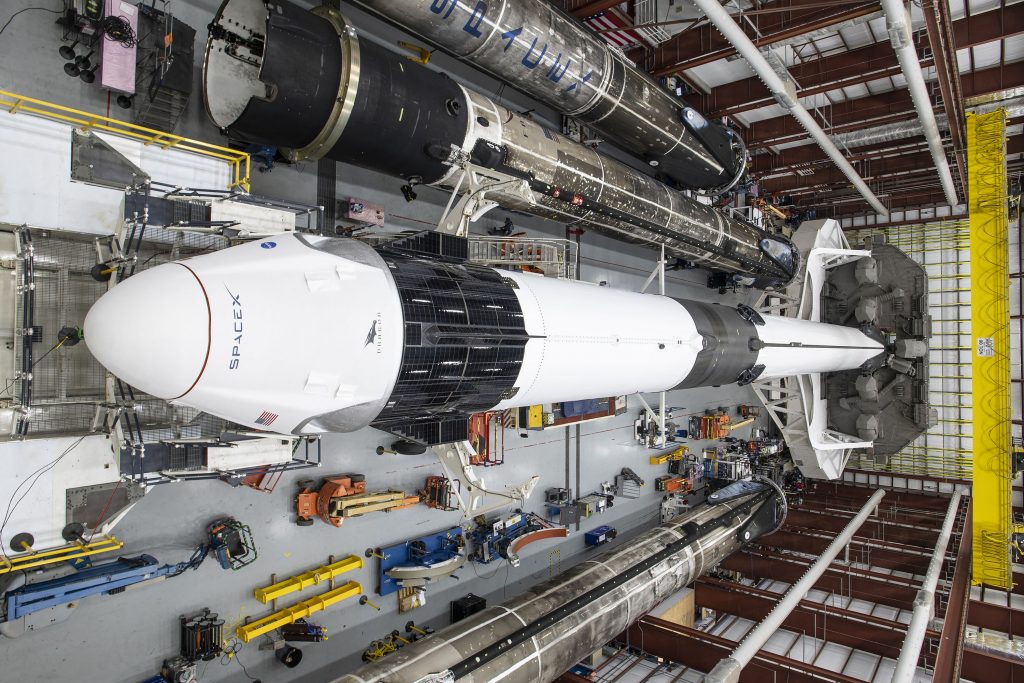
SpaceX has static fired a record-breaking Falcon 9 booster and says it’s ready to launch its 14th Starlink mission this year just a day and a half after sailing past the company’s previous annual launch record.
Set in 2018, SpaceX’s previous annual launch record stood at 21 missions – 20 Falcon 9s and one Falcon Heavy. Now, a little over halfway through November, SpaceX has easily bested itself, launching for the 22nd time to deliver oceanographic satellite Sentinel 6A to a polar orbit on November 21st.
Back on the East Coast, SpaceX fired up six-flight Falcon 9 booster B1049 just five hours after Sentinel 6A’s successful launch, setting the rocket up for its seventh flight – a first for SpaceX and reusable rocketry – in support of Starlink v1.0 Flight 15 (Starlink-15).
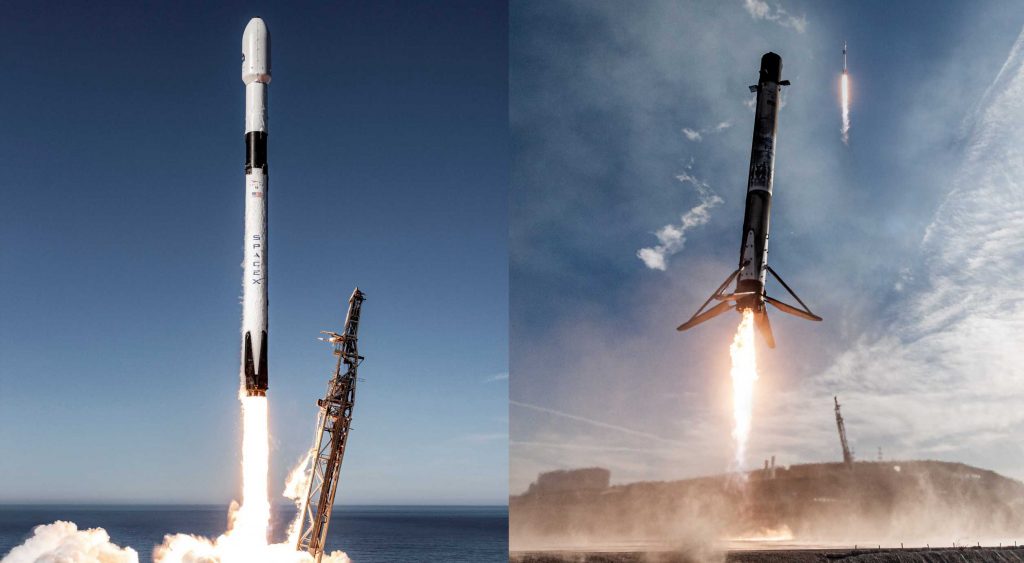
Following an apparent November 20th static fire abort and a brief 24-hour delay, B1049 is now scheduled to lift off no earlier than 9:56 pm EST (02:56 UTC), November 22nd with some 16 metric tons (~35,000 lb) of Starlink communications satellites in tow. Designed to ultimately blanket the Earth in affordable high-quality broadband internet, SpaceX has already begun to roll out a public beta test to what looks like one or several thousand users across the northern US and southern Canada.
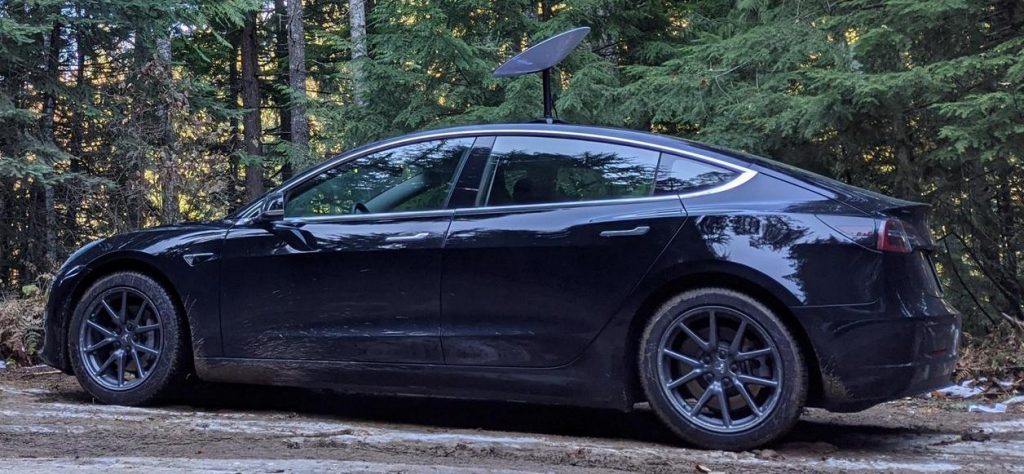
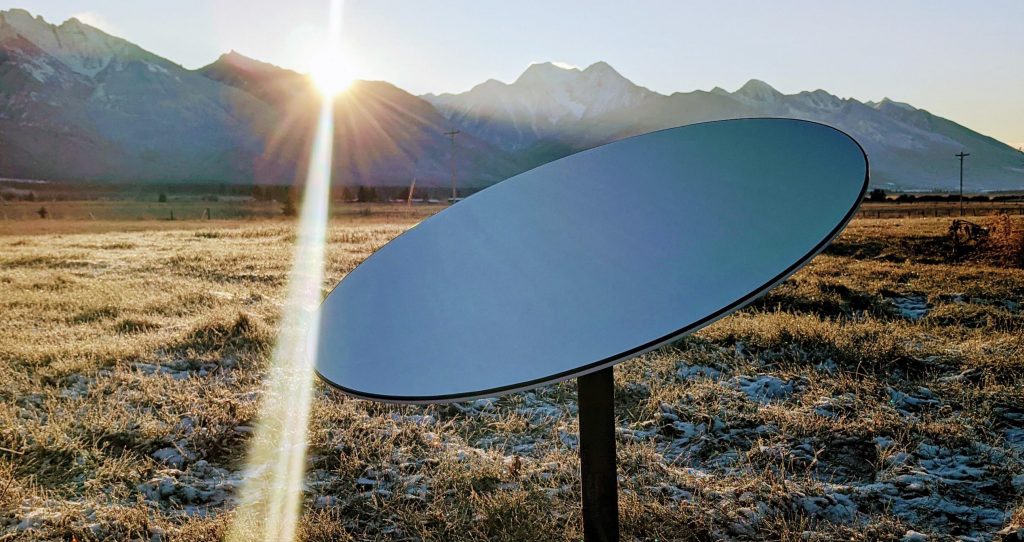
Speaking on a November 21st Reddit Ask Me Anything (AMA) thread, one of the SpaceX Starlink engineers participating revealed that the company is targeting a “wider beta” rollout as early as late-January 2021. Despite having some 820 functioning Starlink satellites in orbit, approximately a third were recently launched and are still raising their orbits or waiting in phasing orbits to properly orient themselves and maximize Starlink internet coverage.
While it’s effectively impossible to predict which orbital ‘plane’ a given batch of Starlink satellites is targeting, it’s likely that the ~300 spacecraft still making their way to operational orbits will complete their journeys within the next 60 days. In general, it takes roughly 2-3 months from any given Starlink launch for all ~60 satellites to reach their operational 550 km (~340 mi) orbits, a process usually performed in batches of 22 – each essentially representing one evenly-space ring of internet coverage a few hundred miles wide.
Despite SpaceX tracking towards a truly record-breaking year of ~25+ launches, CEO Elon Musk revealed that the company is pushing to achieve as many as 48 launches in 2021, more than half of which would likely be Starlink missions.
Tune in below to catch SpaceX’s Sunday Starlink launch live later tonight.

News
Tesla Insurance officially expands to new U.S. state
Tesla’s in-house Insurance program first launched back in late 2019, offering a new way to insure the vehicles that was potentially less expensive and could alleviate a lot of the issues people had with claims, as the company could assess and repair the damage itself.
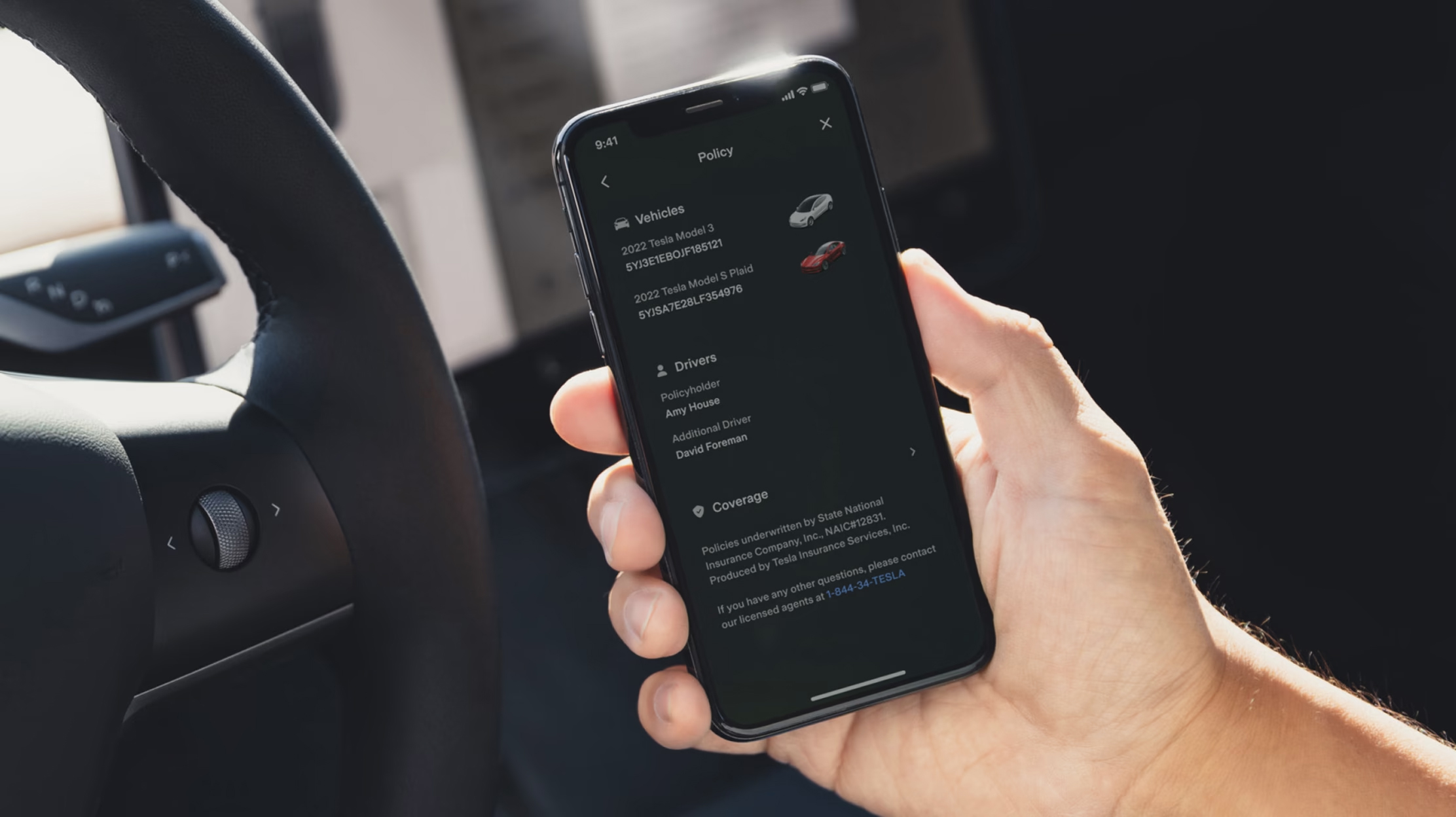
Tesla Insurance has officially expanded to a new U.S. state, its thirteenth since its launch in 2019.
Tesla has confirmed that its in-house Insurance program has officially made its way to Florida, just two months after the company filed to update its Private Passenger Auto program in the state. It had tried to offer its insurance program to drivers in the state back in 2022, but its launch did not happen.
Instead, Tesla refiled the paperwork back in mid-October, which essentially was the move toward initiating the offering this month.
BREAKING: Tesla Insurance has just officially launched in Florida.
This is the first new state to receive @Tesla Insurance in more than 3 years. In total, Tesla insurance is now available in 13 U.S. states (map in thread below of all the states).
Tesla Insurance in Florida uses… pic.twitter.com/bDwh1IV6gD
— Sawyer Merritt (@SawyerMerritt) December 17, 2025
Tesla’s in-house Insurance program first launched back in late 2019, offering a new way to insure the vehicles that was potentially less expensive and could alleviate a lot of the issues people had with claims, as the company could assess and repair the damage itself.
It has expanded to new states since 2019, but Florida presents a particularly interesting challenge for Tesla, as the company’s entry into the state is particularly noteworthy given its unique insurance landscape, characterized by high premiums due to frequent natural disasters, dense traffic, and a no-fault system.
Annual average premiums for Florida drivers hover around $4,000 per year, well above the national average. Tesla’s insurance program could disrupt this, especially for EV enthusiasts. The state’s growing EV adoption, fueled by incentives and infrastructure development, aligns perfectly with Tesla’s ecosystem.
Moreover, there are more ways to have cars repaired, and features like comprehensive coverage for battery damage and roadside assistance tailored to EVs address those common painpoints that owners have.
However, there are some challenges that still remain. Florida’s susceptibility to hurricanes raises questions about how Tesla will handle claims during disasters.
Looking ahead, Tesla’s expansion of its insurance program signals the company’s ambition to continue vertically integrating its services, including coverage of its vehicles. Reducing dependency on third-party insurers only makes things simpler for the company’s automotive division, as well as for its customers.
News
Tesla Full Self-Driving gets sparkling review from South Korean politician
“Having already ridden in an unmanned robotaxi, the novelty wasn’t as strong for me, but it drives just as well as most people do. It already feels like a completed technology, which gives me a lot to think about.”
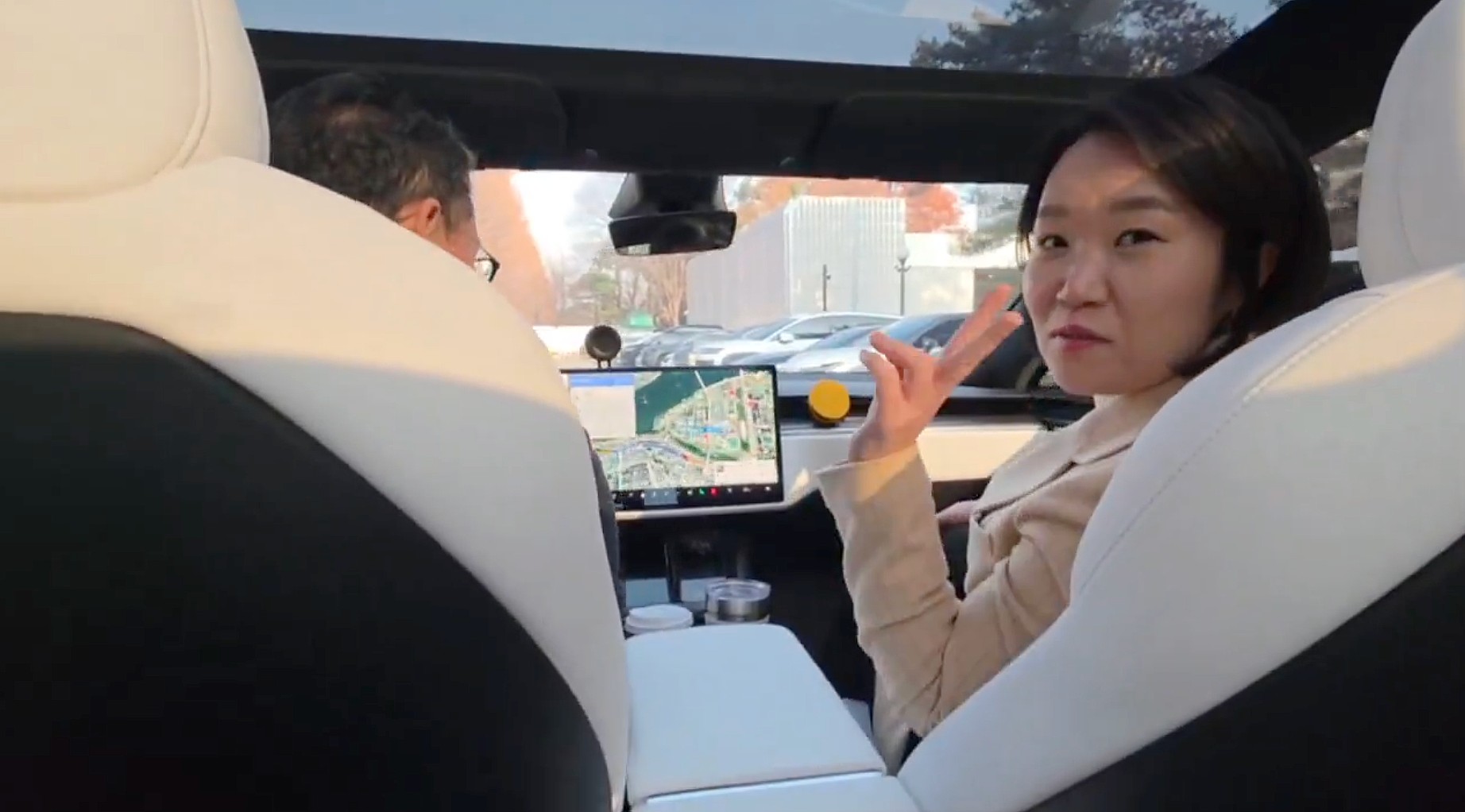
Tesla Full Self-Driving got its first sparkling review from South Korean politician Lee So-young, a member of the country’s National Assembly, earlier this week.
Lee is a member of the Strategy and Finance Committee in South Korea and is a proponent of sustainable technologies and their applications in both residential and commercial settings. For the first time, Lee was able to utilize Tesla’s Full Self-Driving technology as it launched in the country in late November.
Her thoughts on the suite were complimentary to the suite, stating that “it drives just as well as most people do,” and that “it already feels like a completed technology.”
드디어 오늘, 서울에서 테슬라 FSD 체험 했습니다.
JiDal Papa님의 모델S 협찬에 힘입어^^ 파파님 정말 감사합니다.
국회 -> 망원시장 -> 홍익대 -> 국회 복귀 코스였고요.
이미 무인 로보택시를 타봐서 그런지 신기함은
덜했지만, 웬만한 사람만큼 운전을 잘하네요.이미 완성된 기술이라고… pic.twitter.com/8pAidHBpRG
— 이소영 국회의원 (Soyoung Lee) (@im_soyounglee) December 17, 2025
Her translated post says:
“Finally, today I got to experience Tesla FSD in Seoul. Thanks to the Model S sponsored by JiDal Papa^^, I’m truly grateful to Papa. The route was from the National Assembly -> Mangwon Market -> Hongik University -> back to the National Assembly. Having already ridden in an unmanned robotaxi, the novelty wasn’t as strong for me, but it drives just as well as most people do. It already feels like a completed technology, which gives me a lot to think about. Once it actually spreads into widespread use, I feel like our daily lives are going to change a lot. Even I, with my license gathering dust in a drawer, don’t see much reason to learn to drive a manual anymore.”
Tesla Full Self-Driving officially landed in South Korea in late November, with the initial launch being one of Tesla’s most recent, v14.1.4.
It marked the seventh country in which Tesla was able to enable the driver assistance suite, following the United States, Puerto Rico, Canada, China, Mexico, Australia, and New Zealand.
It is important to see politicians and figures in power try new technologies, especially ones that are widely popular in other regions of the world and could potentially revolutionize how people travel globally.
News
Tesla dispels reports of ‘sales suspension’ in California
“This was a “consumer protection” order about the use of the term “Autopilot” in a case where not one single customer came forward to say there’s a problem.
Sales in California will continue uninterrupted.”

Tesla has dispelled reports that it is facing a thirty-day sales suspension in California after the state’s Department of Motor Vehicles (DMV) issued a penalty to the company after a judge ruled it “misled consumers about its driver-assistance technology.”
On Tuesday, Bloomberg reported that the California DMV was planning to adopt the penalty but decided to put it on ice for ninety days, giving Tesla an opportunity to “come into compliance.”
Tesla enters interesting situation with Full Self-Driving in California
Tesla responded to the report on Tuesday evening, after it came out, stating that this was a “consumer protection” order that was brought up over its use of the term “Autopilot.”
The company said “not one single customer came forward to say there’s a problem,” yet a judge and the DMV determined it was, so they want to apply the penalty if Tesla doesn’t oblige.
However, Tesla said that its sales operations in California “will continue uninterrupted.”
It confirmed this in an X post on Tuesday night:
This was a “consumer protection” order about the use of the term “Autopilot” in a case where not one single customer came forward to say there’s a problem.
Sales in California will continue uninterrupted.
— Tesla North America (@tesla_na) December 17, 2025
The report and the decision by the DMV and Judge involved sparked outrage from the Tesla community, who stated that it should do its best to get out of California.
One X post said California “didn’t deserve” what Tesla had done for it in terms of employment, engineering, and innovation.
Tesla has used Autopilot and Full Self-Driving for years, but it did add the term “(Supervised)” to the end of the FSD suite earlier this year, potentially aiming to protect itself from instances like this one.
This is the first primary dispute over the terminology of Full Self-Driving, but it has undergone some scrutiny at the federal level, as some government officials have claimed the suite has “deceptive” naming. Previous Transportation Secretary Pete Buttigieg was vocally critical of the use of the name “Full Self-Driving,” as well as “Autopilot.”








